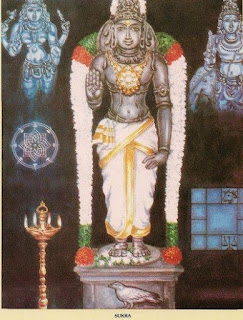River Narmada
The Narmada happens to be one of the most venerated rivers of India.
The Chadoggya Upanishad (1.1.2). says that essence of all beings, is earth, and the essence of the earth is, water. Rivers are an important part of water cosmology. They are worshipped as mother goddesses. Many rivers have been mentioned and worshipped in Rigveda (Nadi stuti verse 5 and 6) carrying perennial waters. Riverbanks have always been the cradles of civilization. Like any mother, a river too gives birth to civilization and nourishes it. River Narmada too, nourishes a rich civilization and culture along its banks.
The Narmada is one of the largest rivers of the Indian subcontinent. It covers an area of 1,312 kms over central India including MP, Maharastra and Gujarat before draining into the Arabian Sea. In Sanskrit narbada means ‘giver of pleasure’. Starting from a small tank at Amarkantak, the river descends meandering through hilly ranges. The Narmada basin has five well defined physiological regions: the upper hilly area ( Shahdol, Mandla, Durg, Balaghat and Seoni); upper plains (Jabalpur, Narsimhapur, Sagar, Damoh, Chhindawara, Hoshangabad, Betul, Raisen and Sehore); the middle plains (east Nimar, part of west Nimar, Dewan, Indore, and Dhar); lower hilly area (Nimar, Jhabua, Dhulia, and part of Vadodara) and lower plains (Narbada, Bharuch and parts of Vadodara). The hilly regions are well forested. The Kanha National park and the Satpura National park are full of wild animals and many types of birds. The flora consists of a variety of grass and medicinal plants. Upper and lower plains are broad and fertile areas well suited for cultivation.
Tribal and folk cultures such as Bhil, Bhilalas, Gond, and Baiga flourish in the lap of the Narmada. They worship river as a goddess, which is a way of their life. Raja Bagh Bahadur made a jharokha in his palace for queen Rupmati to have a daily darshan of the river.
Narmada is considered a sacred and divine river. In folk religion, rivers are called Nadi devata. To give respect and seek its blessings, pilgrims perform a holy parikrama of the river that is considered to be a sacred act. Many festivals are performed on auspicious occasions in temples along the route of the river. This is done to seek its blessings. Religious places and ghats along its course include Amarkantaka (neck of Siva), Teerathraj (king of pilgrimage), Omkeshwara, Maheshwar, Mahadeo temple, Nimbawar Sidhdeshwar Mandir (named after Siva), Chausath yoginis (sixty-four yoginis) temple, Chaubis avatar temple, Bhojpur Siva temple, and Brigurishi temple.
Many legends are associated with Narmada. About Barman ghat, it is said that a sacrificial fire was lighted for Lord Brahma at this place. Rewa khands of Vayu Purana and Skanda Purana are devoted to the story of birth and glory of the river, hence Narmada is also called Rewa. Another legend says two teardrops fell from the eye of Lord Brahama—the creator of the universe—and yielded two rivers, the Narmada and the Sone. It is a saying that Narmada ke kankar utte Shankar, meaning that pebble stones of Narmada get a personified form of Siva.
This divine river symbolizes co-existence of the ancient and the modern. Many dams like Indira Sagar dam (Khandwa), Omkareshwara dam, Rani Avantibai Sagar dam (near Jabalpur, and Sardarsarowara dam are made on this river to cater to the needs of water in urban areas.
The photographs of the Narmada displayed at the exhibition take us on a journey from east to west and from ancient to modern world. They comprise a feast. Starting with a route map, the exhibition guides the viewer over locations with appropriate commentary on photographs. Temples and rituals are seen and the scenic areas en route are a visual delight. A panoramic view of Amarkantak, followed by the greenery of hills with waterfalls, circuitous route of Narmada at Dindori and the tribal dance, distant view of Mandla, water droplets forming a spray at Bhedaghat, multiple steps of ghats at Hoshangabad, temple structure at Maheshwar, and finally the merging of the river into the ocean. Those of us who have not seen the river would be tempted to travel and see a few locations. The adventurous may like to take a raft journey over all possible stretches.



Comments
Post a Comment